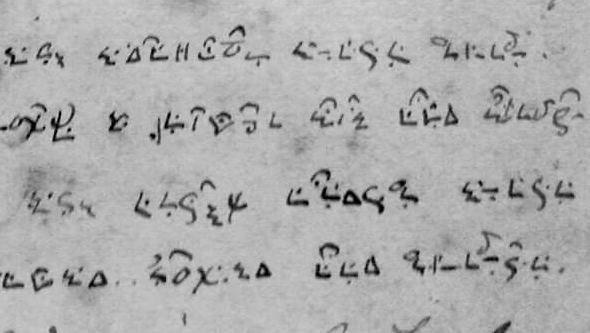Here’s one of the oldest encrypted postcards I have ever seen. Can a reader decipher it?
For years, Reddit has been one of my best sources for encryption mysteries I can use for this blog. Blog reader Sebastian has now made me aware of an especially interesting cryptogram that was recently published on Reddit. A user calling himself andyfring posted it in the r/codes group.
A postcard written in an unusual alphabet
andyfring writes:
Written in 1873 by my great, great grandfather George Furlong (from Luton, Bedfordshire) to his sister Lizzie who was living in Cosheston, Wales. The postcard seems to use some variation on the masonic pigpen code. If you can help decipher this, please let me know.
As frequent readers of Klausis Krypto Kolumne certainly know, I have introduced hundreds of encrypted postcards on this blog since I started writing it in 2013. However, as good as all of these were written after 1873. So, this postcard is something special. Here’s a scan of it:

Source: Reddit
The Reddit post doesn’t say how the other side of the postcard looks like. I assume that it contains the address of the recipient, but no picture.
Most encrypted postcards I am ware of were written by young men to their lovers. This one is an exception, as the sender mailed it to his sister.
Usually, the writers of such cards used a simple substitution cipher (MASC) for encryption. I don’t know if we are dealing with a MASC here, too. The symbols look more complicated than on most encrypted postcards, which makes a transcription and detailed examination more difficult.
Is this solution correct?
A reader of the r/codes group on Reddit has provided a solution of this cryptogram. Here is the plaintext he allegedly detected:
Dearest Sister,
Love is not strange to us, and the rules we know. I shall think to be fully committed, unlike those other men. I long for you to understand how I feel. Never shall I give you up, or let you down. Never shall I run around and desert you. Never shall I make you cry, or say goodbye, or tell a lie and hurt you.
These lines resemble the lyrics of the 1987 pop-song Never gonna give you up by Rick Astley. Is this a coincidence? Did the author of Never gonna give you up and the writer of the postcard use the same same source? Or is this solution just a joke? So far, this deciphering doesn’t make much sense to me, but perhaps I have overlooked something.
Can a reader tell me whether the proposed plaintext is correct? If so, how does it match with the ciphertext? If not, how does the real solution look like? Any help is welcome.
Follow @KlausSchmeh
Further reading: An encrypted postcard stamped in Colchester
Linkedin: https://www.linkedin.com/groups/13501820
Facebook: https://www.facebook.com/groups/763282653806483/



Kommentare (3)